In normal times, most PC enthusiasts wouldn’t consider a pre-built solution. More affordable pricing, enhanced customizability and warranty for each component, plus the whole trip of building a PC yourself just can’t be beaten. With the ongoing shortages and insane prices of graphics cards though, a pre-built PC suddenly looks like a very reasonable, if not necessary option.
Pre-built systems do have their advantages: sometimes they will offer components before they’re available on retail, like the Ryzen 4000G and 5000 non-X CPUs. And if you buy a pre-built, that usually removes the fear that some parts won’t be compatible, or that something will go wrong in the assembly process.

We recently updated our PC Buying Guide, where as usual we recommend the best combination of components for builds of different budgets and intended workloads. For this article, though, we visited the websites of top PC OEMs to see whether they offer a better deal than building your own Value Gaming Rig or High-End Gaming Machine… guaranteed GPU included!
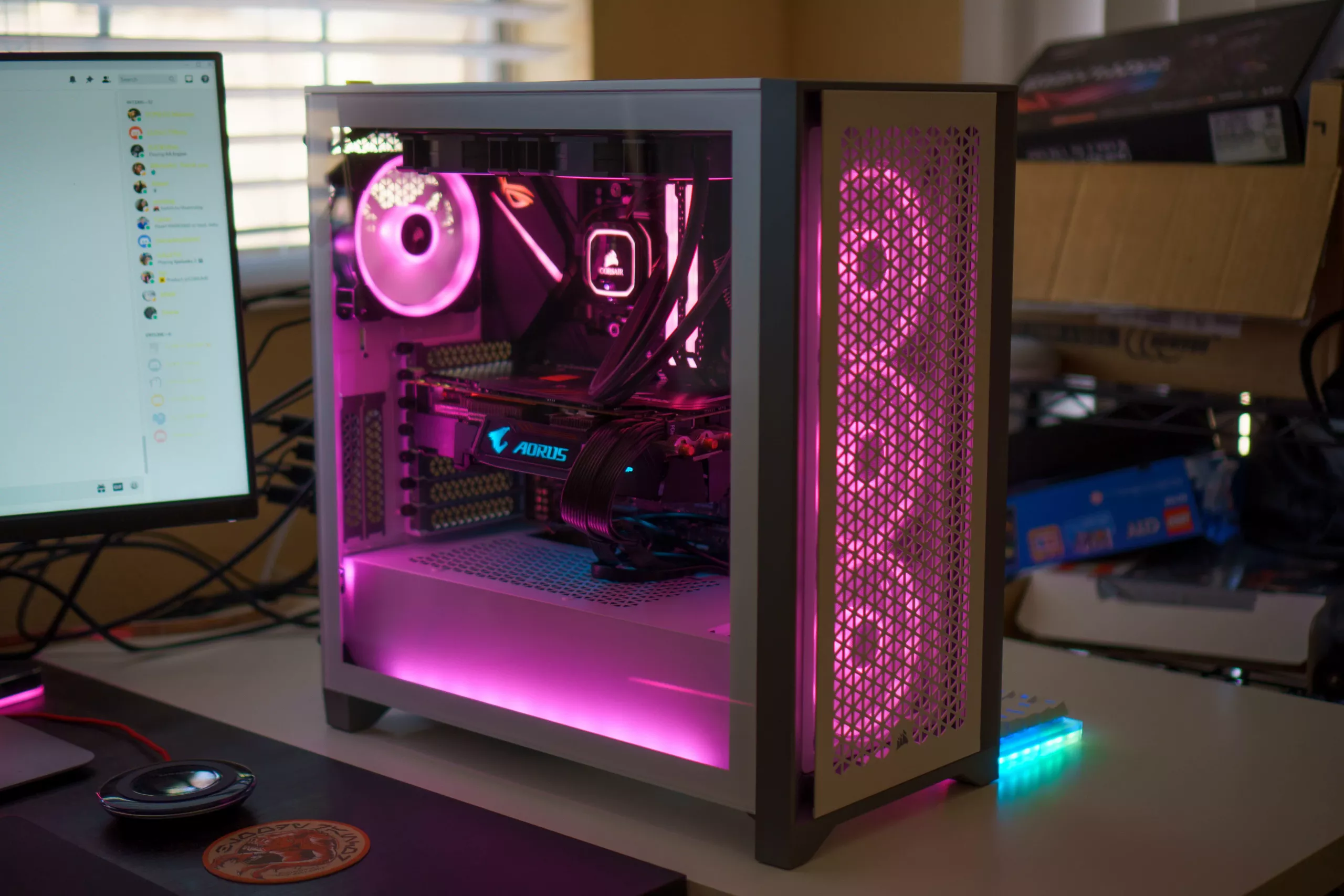
One shortcoming with most PC makers offering pre-builts is that you can’t know exactly what you’re getting (except for boutique builders, which may deserve an entire follow up article after this one). All of the OEMs mentioned in this article don’t specify details like memory latency, and most of them don’t mention the brand or model of the SSDs shipping in their systems. For example, if you were to get a DRAM-less SSD, its performance wouldn’t be the same as if you were picking one of the best we recommend. The same can be said about OEM motherboards, which are usually not retail versions and may not get the same treatment of proper BIOS updates and revisions.
Without further ado, we’re going to put our recommended PC specifications for a DIY Value Gaming Rig, next to top offerings from Lenovo, Dell and Asus, as long as you can get a proper gaming GPU in the process. The GeForce GTX 1660 Super is the cheapest GPU that we’d recommend buying for its $230 MSRP, but at the time of writing, the cheapest two-fan version of it is selling for a staggering $650.
How do the OEMs compare?
| Component | DIY | Lenovo | Dell | Asus |
| Processor | Ryzen 5 3600X |
Ryzen 7 3700X |
Ryzen 5 5600X |
Ryzen 7 3700X |
| CPU Cooler | Wraith Spire | 95W Air | Liquid | Unspecified |
| Motherboard | B550 Tomahawk | B550 | B550A | B450 |
| Memory | 2 x 16GB DDR4-3600 CL18 | 2 x 8GB DDR4-3200 | 2 x 8GB DDR4-3200 | 2 x 8GB DDR4-3200 |
| Storage | 1TB Sabrent Rocket 4.0 | 512GB PCIe | 512GB PCIe | 512GB PCIe |
| Graphics | 1660 Super | 1660 Super | 1660 Super | 1660 Ti |
| PSU | SuperNova GA 650 | 400W | 550W | 500W Gold |
| Case | 400D Airflow | mATX | mATX | ATX |
| Price | $1,125 (MSRP), $1545 (current) | $1,250 | $1,330 | $1,200 |
Lenovo Legion Tower 5
Lenovo offers the 1660 Super in its Legion Tower 5 series. For $1,250, you can get it with a Ryzen 3700X CPU with a 95W cooler, 2 x 8GB of RAM at 3200MHz, and an unspecified 512GB PCIe SSD. The best part about this system is the B550 motherboard: it has 4 memory slots, two M.2 connectors for storage, and 5 USB ports in the rear, including one Type-C.
The main problem is that the 400W PSU may lack the power or even the cables to handle more power-hungry components in the future. On a more positive note, the mATX case looks like it allows decent airflow. It also has 2 additional front USB ports.
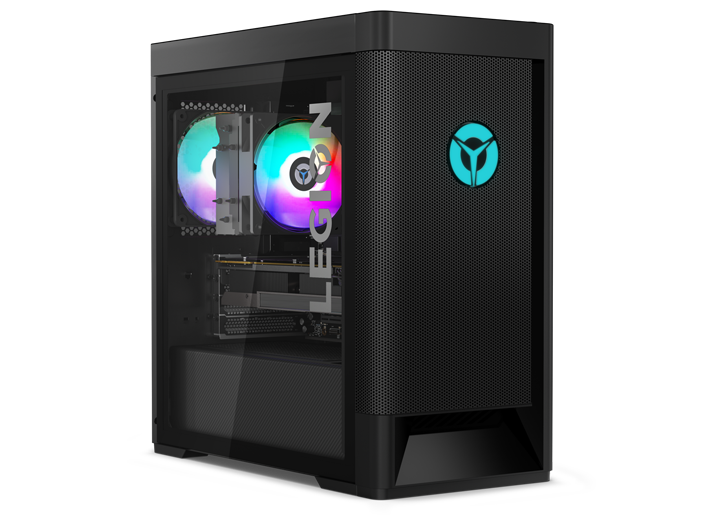
The Legion Tower 5 comes with Windows 10 Home, and one year of warranty that includes 24/7 service. You can expand that warranty to 2 years for $39, and up to 5 years for $40 more per year. Unnamed mouse and keyboard are also included.
At first glance, the system looks cheaper than building your own PC, but if we tried to build a system with similar specs, it would cost about the same, even if we paid $650 for the 1660 Super. We wouldn’t buy that PC at full price, but we also wouldn’t blame you if you did.
Dell Alienware Aurora R10
Dell offers the GTX 1660 Super in its Alienware Aurora R10 series, which offers a unique design, that makes the PC look like an alien toaster flipped on its side. Despite its size and because of its unusual shape, the case only supports an mATX motherboard. In fact, unless you have some modding skills it won’t be compatible with any aftermarket motherboard, so if you were hoping to upgrade the platform but keep the case once DDR5 memory comes out, then you may be out of luck.
The cheapest AMD processor offered alongside the 1660 Super is the Ryzen 5 5600X – a current-gen part that’s almost as good for gaming as the best gaming CPUs. Because the case design allows very little space for a CPU cooler and no clear airflow path near the CPU, we opted for the liquid cooling solution. The motherboard uses the B550A chipset, which is actually B450 with PCIe 4.0 enabled. It has 4 memory slots, and 11 (!) USB ports in the rear in addition to the 4 in the front, including a Type-C on each side.
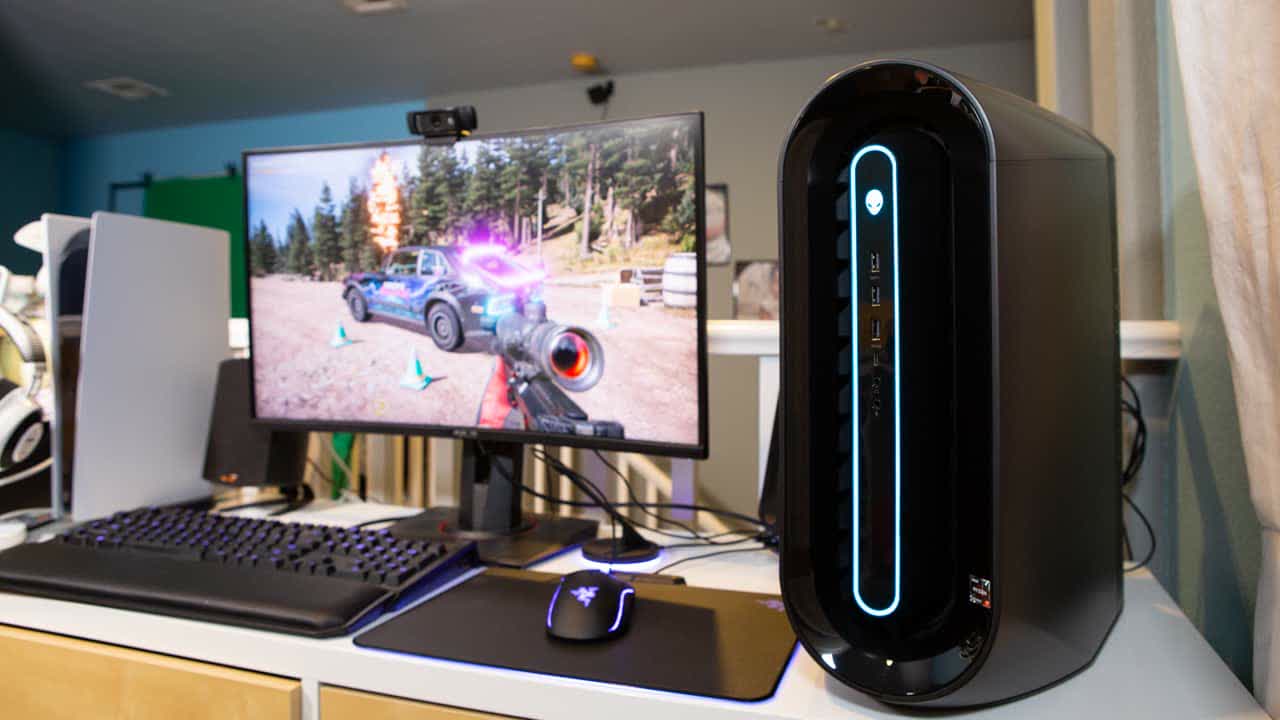
Image: slickdeals
When choosing a pre-built from Dell’s many options, one needs to be smart: each 2 x 16GB memory option costs $150 more than the 2 x 8GB at the same speed. For that kind of money you could simply buy a 2 x 16GB kit, and then sell the one that came with the computer. Similarly, instead of wasting your single M.2 storage slot on an unknown PCIe SSD, you can order that system with a hard drive (for $180 less than an SSD for 1TB), and add a 1TB Sabrent Rocket 4.0 for $150. For comparison’s sake, in the table above we included the configuration with 2 x 8GB of memory at 3200MHz and a 512GB SSD.
With an unnamed 550W power supply, the system will cost $1,330 for the all-black version, and $30 extra for the black-and-white version. That includes Windows 10, and one year of basic warranty with many expansion options. The MS116AW optical mouse and an unnamed multimedia keyboard will also be yours for $10 more. Once again, that system is not a better value than building your own PC, but if you like its looks or need many USB ports, then it may be a decent option.
Asus ROG Strix GA15DH
Asus doesn’t currently offer the 1660 Super in any build, but it offers the comparable GTX 1660 Ti in its ROG Strix GA15DH series. For $1,200 you can get it with a Ryzen 3700X, an unspecified cooler, an unnamed B450 motherboard (Asus we assume) with just 2 memory slots, 2 x 8GB of 3200MHz RAM, and a 512GB PCIe 3.0 SSD in the motherboard’s only M.2 slot.
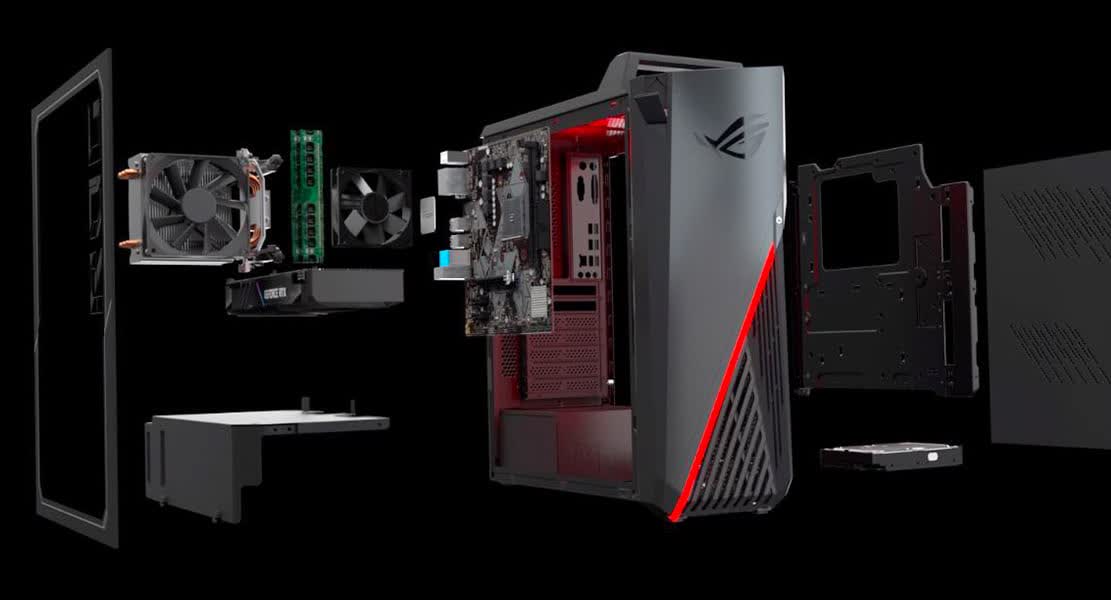
On the positive side, the unnamed 500W PSU has an 80 Plus Gold-level efficiency, and the system comes in a well-ventilated ATX case. It has 2 front USB ports (one Type-C), and the rear has 6 more. Ships with Windows 10, one year of warranty, and generic keyboard and mouse. Our conclusion for that system is the same as for the others: it’s not bad value, but also not a great one.
A high-end difference
Next, let us compare our recommended DIY High-End Gaming Machine to offers from HP, Dell and MSI. At $700 (MSRP), the GeForce RTX 3080 would be the top gaming graphics card we’d recommend, but in practice getting one now would cost you at least $2,500, almost doubling our recommended system’s price.
So how do OEMs fare when you put in more expensive components on a pre-built?
| Component | DIY | MSI | Dell | HP |
| Processor | Ryzen 7 5800X |
Ryzen 7 5800X |
Ryzen 7 5800 |
Core i7-10700K |
| CPU Cooler | Pure Rock 2 | Dragon Liquid | Liquid | Liquid |
| Motherboard | X570 Taichi | B550 | B550A | Z490 |
| Memory | 4 x 8GB DDR4-3600 CL16 | 2 x 8GB DDR4 | 2 x 8GB DDR4-3200 | 2 x 8GB DDR4-3200 HyperX |
| Storage | 2TB 980 Pro | 1TB SATA SSD | 1TB PCIe | 1TB PCIe WD Black |
| Graphics | RTX 3080 | RTX 3080 | RTX 3080 | RTX 3090 |
| PSU | NZXT C 850 | 650W Gold | 1,000W | 750W Platinum Cooler Master |
| Case | MasterCase H500 | ATX | mATX | mATX |
| Price | $4,095 (current), $2,295 (MSRP) |
$2,500 | $2,480 | $3,390 |
MSI Aegis ZS
At the time of publishing this article, you may be able to get a whole PC that includes the RTX 3080 for the same price as the card itself from MSI. The MSI Aegis ZS is powered by the Ryzen 7 5800X, one of the best gaming CPUs you can buy. It comes with MSI’s own Dragon 120mm liquid cooler, 2 x 8GB of RAM (speed not mentioned), a 1TB SATA SSD ‒ a strange choice considering the small premium on PCIe SSDs, but not a big deal for gaming ‒ and a 650W, 80 Plus Gold power supply in an ATX case.
At the time of publishing this article, you may be able to get a whole PC that includes the RTX 3080 for the same price as the card itself from MSI.
Although the case includes 3 front fans, its front panel design can greatly hamper airflow. It has 3 front USB ports, though, including a Type-C, and the rear has 6 more.
The exact B550 motherboard is not specified, but the pictures on MSI’s website show that it has 4 memory slots and two M.2 storage slots, which makes the SATA SSD seem even more out of place (but easy to upgrade).
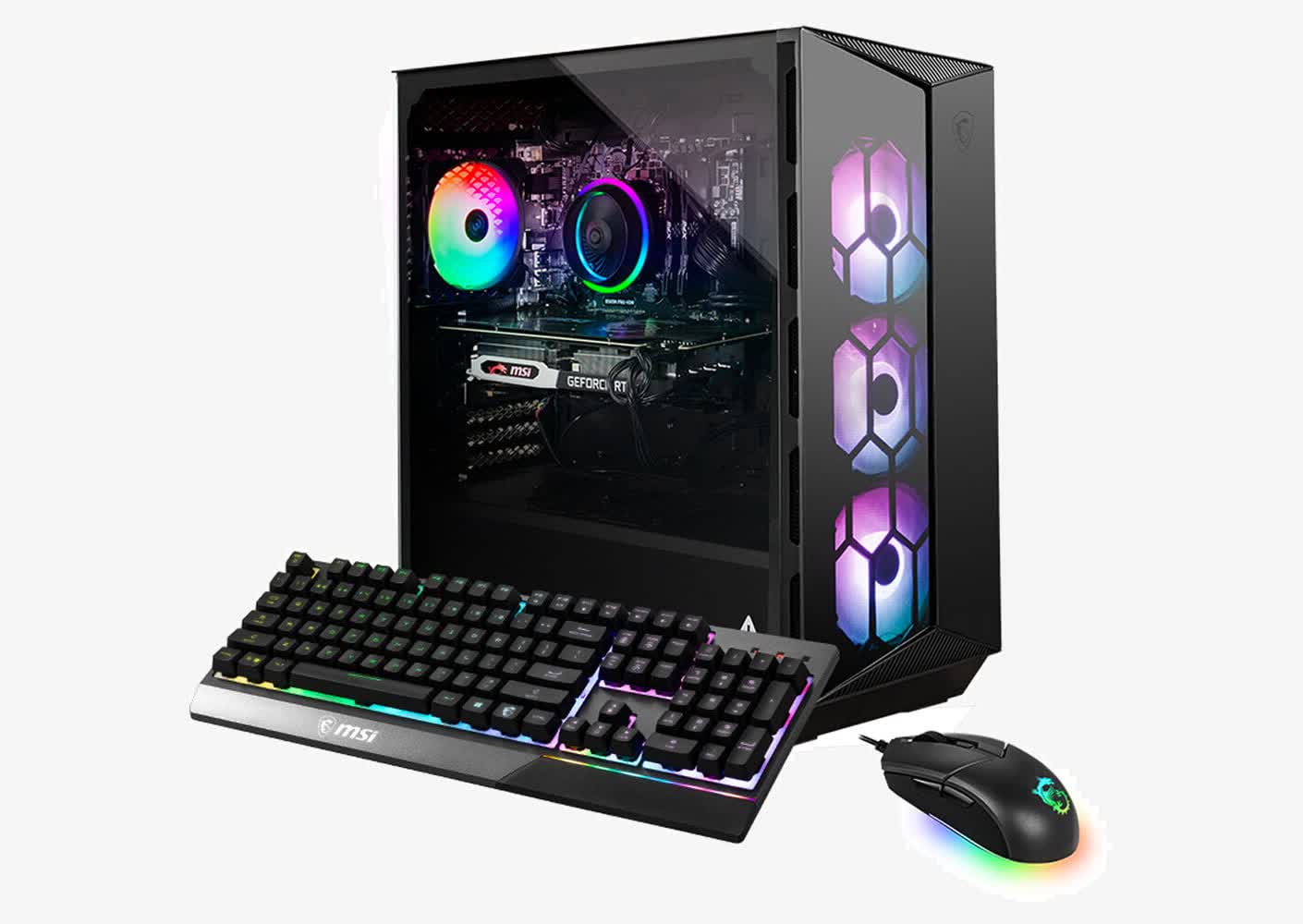
The price includes Windows 10 Home, one year of warranty, the Clutch GM11 mouse ($25 separately) and the Vigor GK30 keyboard ($40 separately). Even if you end up selling a few of the parts and buying better ones, it’s a far better value than anything similar you can get in the DIY market right now.
If you don’t need the best of the best, you’ll soon be able to get a rather similar system with an RTX 3070 for $2,050 in the Aegis RS or Aegis R series, if you are willing to step down to a Core i7-10700K or i7-11700, respectively. Both of those processors perform similarly to the R7 5800X in most games, and worse in only a few. Depending on what games you play, each of those systems may be a better value for you.
Dell Alienware Aurora R10
We took the same Dell Aurora R10 from the first table and configured it with higher-end parts. Does it make more sense at that price point? It sure looks like it.
For the CPU, we went with the OEM-only Ryzen R7 5800, both because of the case’s questionable CPU cooling capabilities and because it’s $150 cheaper than the marginally stronger and less efficient 5800X. We chose liquid cooling again. For the sake of comparison we went with 2 x 8GB of 3200MHz memory and a 1TB PCIe SSD.
At a higher price point, the lack of a second M.2 storage slot on the unreplaceable motherboard looks much worse. With the RTX 3800, we literally had to go with the unnamed 1,000W power supply. With Windows 10 Home and one year of warranty, the total price is $2,480 ‒ cheaper than buying the RTX 3080 alone!
Buying that system with an RTX 3070 will only save you $200, which is consistent with the difference in the cards’ MSRPs.
HP Omen 30L
The HP Omen 30L is different from the previous two PCs in several ways. HP doesn’t offer the RTX 3080 in any of its desktops, but it offers the RTX 3090 ‒ a card with an inexcusable MSRP of $1,500 that sells for at least $3,000 these days.
A similar system with an RTX 3070 actually sells now for about $1,000 less than the RTX 3090 system – again, matching the difference in the cards’ MSRPs and making us hopeful that a version with an RTX 3080 will be available soon for about $2,600.
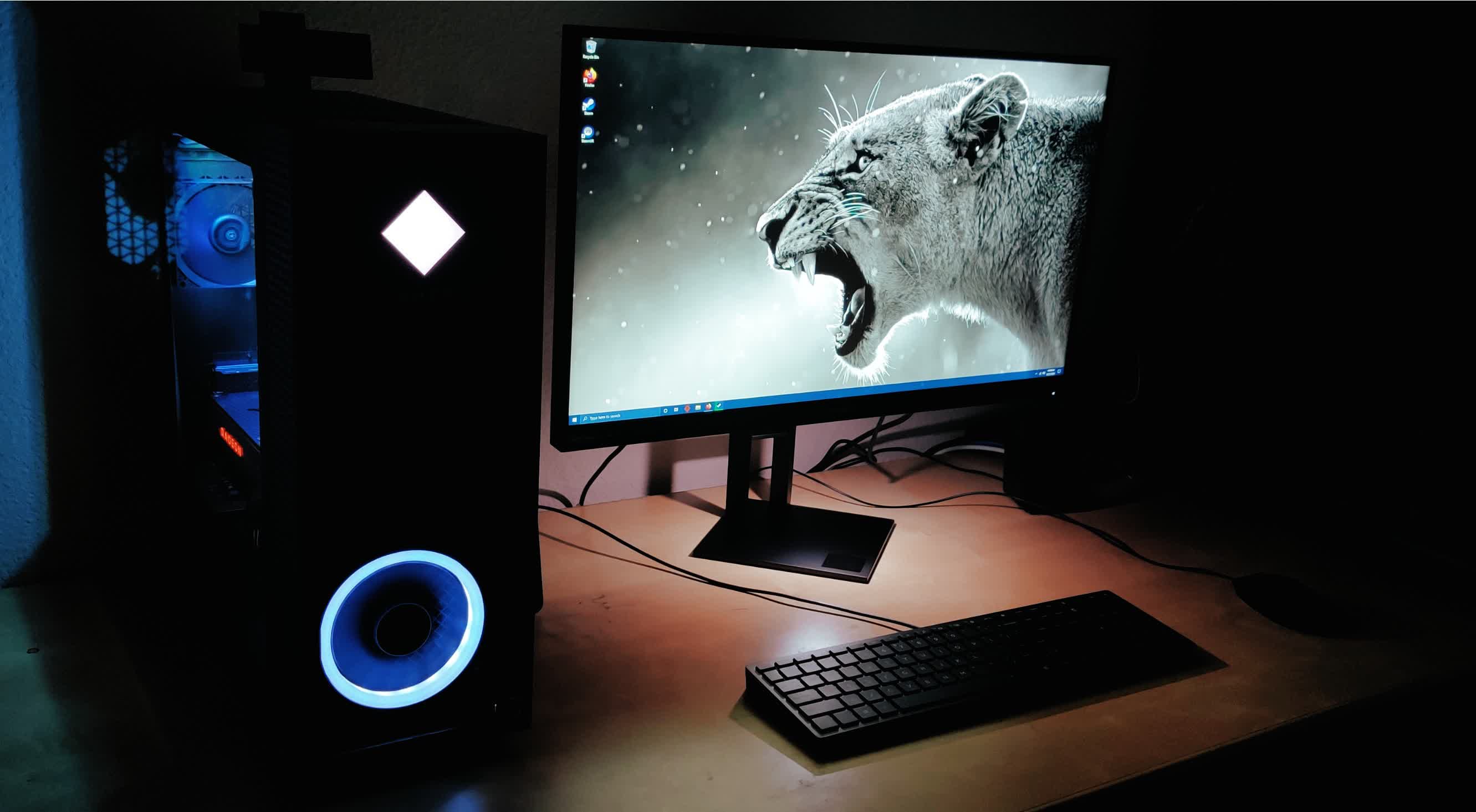
HP only offers Intel CPUs alongside the RTX 3090, so we went with the Core i7-10700K. With a single-fan liquid cooler, we’d rather not pay much more for a 10-core CPU that would rarely help gaming performance.
HP is the only PC maker mentioned in this article that specifies the brand of the memory, SSD, and power supply in its systems. The memory is from HyperX, and we went for 2 x 8GB at 3,200MHz. The SSD is from WD’s Black series ‒ probably the DRAM-equipped, PCIe 3.0 SN750 as the CPU doesn’t support PCIe 4.0. The Cooler Master PSU offers 750W and 80 Plus Platinum efficiency.
The proprietary motherboard uses the Intel Z490 chipset. It has 4 RAM slots and two M.2 storage slots. Similarly to the Aurora, despite the Omen’s height it can’t fit an ATX motherboard, but only mATX and a radiator on the top panel. Thanks to the perforated sides of the case’s front panel, the single front fan should be able to get cool air into the system. The front I/O is surprisingly simple given the price point, with just two USB connectors, but the rear has 7 more, including one Type-C.
The HP Omen is more expensive than the other systems (not only because of the RTX 3090), but still more affordable than building a comparable PC yourself these days. The price includes Windows 10 Home, one year of warranty, Microsoft Office and McAfee LiveSafe trials and unnamed mouse and keyboard. If you are willing to pay more for knowing all the parts you’re getting, but don’t want to pay thousands of dollars for a graphics card, it may be a good compromise.
Is this the year of the pre-built gaming PC?
Every pre-built PC costs a few hundreds of dollars more than the sum of its parts’ MSRPs. In the mainstream segment, those dollars are enough to severely hurt the system’s value proposition. In the high end however, they are nothing compared to how overpriced some of those parts currently are at retailers.
There’s the strong possibility that the GPU shortage will last a while longer, and if you want a new gaming PC, going pre-built has probably never made more sense than it does today.
In this article we only considered major PC manufacturers to make the comparison simpler, but boutique builders like Origin, CyberPowerPC and Maingear may be able to offer the best of both worlds by building PCs for customers, and using a wide range of retail parts while scoring a GPU with them, too. Should we look into that next?
Shopping Shortcuts
Source link





